calsfoundation@cals.org
Trees
When European explorers first came to Arkansas in the sixteenth century, they found the vast majority of the state covered by some type of forest or woodland. In general, the upland areas of the state were covered by short-leaf pine/oak/hickory forests in areas underlain by acidic rocks (primarily sandstone and chert) and by oak/hickory forests in areas underlain by neutral to calcareous rocks (primarily limestone and dolomite). Lowland areas of eastern and southern Arkansas were covered primarily by bottomland hardwood forests, with bald-cypress/water-tupelo swamps in the wettest areas. The Gulf Coastal Plain of southern Arkansas was covered by a mix of forest types, with loblolly and/or short-leaf pine dominant in many areas. Within these general forest types were hundreds of species of woody plants and at least 148 species of trees.
In 2016, a total of 436 kinds of woody plants were known to occur in the wild in Arkansas, comprising 419 species plus another seventeen varieties and subspecies. Of these, 185 can be considered trees, 189 are best described as shrubs, and sixty-two are woody vines. In some cases, it is difficult to draw a hard line between these categories, and various reference works differ in their criteria for each. For the purposes of these this entry, however, each category is defined as follows:
Trees are defined as perennial, woody plants that are greater than five meters (sixteen feet) in height at maturity; they often have a single stem or relatively few stems. Shrubs are defined as perennial, often multi-stemmed woody or semi-woody plants usually less than five meters (sixteen feet) in height at maturity. This includes the bamboo members of the grass family (which may be taller), yuccas, the highbush members of the genus Rubus (blackberries and raspberries), prickly-pear cacti, and dwarf palmettos. Woody vines are defined as perennial, woody or semi-woody twining, climbing, or trailing plants with relatively long stems. In some cases, these may not appear especially “woody” (e.g., the trailing or dewberry members of the genus Rubus and some greenbriers in the genus Smilax), but their stems do not die back to the ground in winter.
Of the 185 trees in Arkansas, thirty-five (18.9 percent) are not native to the state and were introduced either accidentally or intentionally from elsewhere in the world since the time of European settlement. Two others are of uncertain native status. Eighteen (9.7 percent) have been identified as state species of conservation concern by the Arkansas Natural Heritage Commission. These species are rare in the state and may be at risk from loss of habitat, disease, or other factors. All of these are designated in the table below.
Arkansas is home to one tree that is thought to be endemic to Arkansas. Maple-leaf oak (Quercus acerifolia) is a small tree known from just four mountaintops in the Ouachita Mountains and Arkansas Valley, where it is confined to high-elevation dry woodlands.
The largest genera of trees in Arkansas are the oaks (Quercus; thirty-one kinds considered trees, twenty-nine of which are native), the maples (Acer; ten kinds, nine native), the hickories (Carya; ten species, all native), the plums and cherries (Prunus; eight species, six native), the hawthorns (Crataegus; seven kinds considered trees, all native), the elms (Ulmus; seven species, six native), the hollies (Ilex; six species considered trees, four native), the pines (Pinus; six species, two native and one of uncertain native status), the magnolias (Magnolia; five species, four native), and the ashes (Fraxinus; five species, all native).
Two species of native pine trees are widely distributed in Arkansas and are of great economic importance. Short-leaf pine (Pinus echinata) is a dominant species in large areas of the Interior Highlands (Ozark and Ouachita mountains) but is also widespread in the Gulf Coastal Plain. Loblolly pine (Pinus taeda) has been planted throughout the state but is considered native to the Gulf Coastal Plain, with a few rare pockets of natural occurrence in the Mississippi Alluvial Plain and Ouachita Mountains. Several other species of pine have been occasionally planted in Arkansas but are not naturalized to any great extent.
Oaks are also of great importance, both ecologically and economically, in the forests of Arkansas. Thirty-two kinds of oaks are known to grow in the state, thirty-one of which are trees. The most common and widespread upland oak species in the state are white oak (Quercus alba), southern red oak (Q. falcata), blackjack oak (Q. marilandica), chinquapin oak (Q. muehlenbergii), northern red oak (Q. rubra), post oak (Q. stellata), and black oak (Q. velutina). Common lowland oaks include overcup oak (Q. lyrata), swamp chestnut oak or cow oak (Q. michauxii), water oak (Q. nigra), cherrybark oak (Q. pagoda), willow oak (Q. phellos), and Nuttall’s oak (Q. texana). Hickories are also common in most of Arkansas’s natural forests, with mockernut hickory (Carya alba), pignut hickory (Carya glabra), and black hickory (Carya texana) common on drier sites, while bitternut hickory (Carya cordiformis), kingnut or shellbark hickory (Carya laciniosa), and shagbark hickory (Carya ovata) are more common in moist sites. Water hickory or bitter-pecan (Carya aquatica) occurs in the wettest bottomland hardwood forests.
Some native tree species are colonizers of human-disturbed sites such as abandoned pastures and crop fields, cutover forests, and roadsides. Common examples of these pioneer tree species in Arkansas include persimmon (Diospyros virginiana), honey locust (Gleditisa triacanthos), eastern red-cedar (Juniperus virginiana), sweet-gum (Liquidambar styraciflua), Osage-orange or bois d’arc (Maclura pomifera), black cherry (Prunus serotina), black locust (Robinia pseudoacacia), sassafras (Sassifras albidum), and winged elm (Ulmus alata). Other species are typically found along major streams and rivers where natural disturbance from flooding favors species that reproduce abundantly and grow quickly. Examples of such riverine species include box elder (Acer negundo), silver maple (Acer saccharinum), river birch (Betula nigra), sugarberry (Celtis laevigata), hackberry (Celtis occidentalis), green ash (Fraxinus pennsylvanica), sycamore (Platanus occidentalis), eastern cottonwood (Populus deltoides), black willow (Salix nigra), and American elm (Ulmus americana). Swamps that are flooded for long durations are often dominated by water tupelo (Nyssa aquatica) and/or bald-cypress (Taxodium distichum), both of which can withstand nearly permanent water once they are established.
Upland forests, while often dominated by pine, oak, and hickory, are also occupied by many other tree species. Other common species include red maple (Acer rubrum), red buckeye (Aesculus pavia), serviceberry (Amelanchier arborea), devil’s walkingstick (Aralia spinosa), redbud (Cercis canadensis), flowering dogwood (Cornus florida), white ash (Fraxinus americana), black-gum (Nyssa sylvatica), hop-hornbeam or ironwood (Ostrya virginiana), Mexican plum (Prunus mexicana), black cherry (Prunus serotina), and rusty blackhaw (Viburnum rufidulum). In more moist or nutrient-rich sites, other hardwood species may be found, including sugar maple (Acer saccharum), Ohio buckeye (Aesculus glabra), pawpaw (Asimina triloba), beech (Fagus grandifolia), deciduous holly (Ilex decidua), American holly (Ilex opaca), black walnut (Juglans nigra), and basswood (Tilia americana).
Not all of the tree species found in Arkansas are native to the state. Several of these non-native trees are considered by botanists and ecologists to be invasive in Arkansas’s natural communities, capable of displacing native vegetation and altering habitat for native wildlife. Examples of non-native invasive trees in Arkansas include tree-of-heaven (Ailanthus altissima), silk-tree (Albizia julibrissin), Chinese holly (Ilex cornuta), Chinaberry (Melia azedarach), white mulberry (Morus alba), empress-tree or princess-tree (Paulownia tomentosa), white poplar (Populus alba), perfumed cherry (Prunus mahaleb), callery pear (Pyrus calleryana), and Chinese tallow-tree (Triadica sebifera).
Diverse forests with the full range of tree species typical of pre-settlement Arkansas have declined in the last century as parts of the state were largely cleared for agriculture, converted to single-species (primarily loblolly pine) plantation forestry, or developed. Some forest and woodland types are still widespread and abundant, but others have declined enough to be of conservation concern. Forest types that have experienced the greatest decline are those that are restricted to geographic regions where their geology, soils, climate, topography, and location have made them highly profitable for conversion to other uses. Examples of these forest types include the bottomland forests of eastern Arkansas, the oak barrens and glades of the igneous rock regions of Garland, Hot Spring, Saline, and Pulaski counties, the oak savannas of northwestern Arkansas and the Grand Prairie region, and, more recently, the pine flatwoods of the Gulf Coastal Plain.
Several Arkansas tree species have been dramatically reduced from their historical levels due to the introduction of diseases or pests from other regions of the world. The most well-known example is the decline of Arkansas’s two native chinquapins or chestnuts (Castanea pumila var. pumila and C. pumila var. ozarkensis) as a result of the chestnut blight, a fungal pathogen accidentally introduced from Asia in the early twentieth century. Other examples include the dramatic decline of butternut, or white walnut (Juglans cinerea), in recent decades from butternut canker disease, as well as the more modest decline of American elm (Ulmus americana) due to Dutch elm disease. Many ecologists and foresters are currently concerned about the recent detection in Arkansas of dogwood anthracnose (a fungal disease causing a decline in flowering dogwoods in the eastern United States) and the detection in 2014 in southern Arkansas of the emerald ash borer (an introduced insect that is killing all species of ash trees in the upper Midwest).
The following table presents an annotated list of the 185 trees known to occur in the wild in Arkansas as recorded by Gentry et al. (2013) and amended by the staff of the Arkansas Natural Heritage Commission with data gathered since 2013.
Annotations are as follows:
+ = state conservation concern (rare species)
* = non-native to Arkansas
*? = questionable or uncertain native status
| Scientific Name | Common Name(s) | Family | Family Common Name |
| Acer ginnala * | Amur maple | SAPINDACEAE | Soapberry Family |
| Acer negundo var. negundo | box elder | SAPINDACEAE | Soapberry Family |
| Acer negundo var. texanum | box elder | SAPINDACEAE | Soapberry Family |
| Acer rubrum var. drummondii | swamp red maple | SAPINDACEAE | Soapberry Family |
| Acer rubrum var. rubrum | red maple | SAPINDACEAE | Soapberry Family |
| Acer saccharinum | silver maple | SAPINDACEAE | Soapberry Family |
| Acer saccharum var. floridanum | southern sugar maple | SAPINDACEAE | Soapberry Family |
| Acer saccharum var. leucoderme + | chalk maple | SAPINDACEAE | Soapberry Family |
| Acer saccharum var. nigrum + | black maple | SAPINDACEAE | Soapberry Family |
| Acer saccharum var. saccharum | sugar maple | SAPINDACEAE | Soapberry Family |
| Aesculus glabra var. arguta | Texas buckeye | SAPINDACEAE | Soapberry Family |
| Aesculus glabra var. glabra | Ohio buckeye | SAPINDACEAE | Soapberry Family |
| Aesculus pavia var. pavia | red buckeye | SAPINDACEAE | Soapberry Family |
| Ailanthus altissima * | tree-of-heaven, stink-tree | SIMAROUBACEAE | Quassia Family |
| Albizia julibrissin * | mimosa, silk-tree | FABACEAE | Bean Family |
| Amelanchier arborea | downy service-berry, shadbush | ROSACEAE | Rose Family |
| Aralia spinosa | devil’s-walkingstick, Hercules’-club | ARALIACEAE | Ginseng Family |
| Asimina triloba | pawpaw | ANNONACEAE | Custard-apple Family |
| Betula nigra | river birch | BETULACEAE | Birch Family |
| Broussonetia papyrifera * | paper-mulberry | MORACEAE | Mulberry Family |
| Carpinus caroliniana subsp. caroliniana | musclewood, ironwood, American hornbeam | BETULACEAE | Birch Family |
| Carpinus caroliniana subsp. virginiana | musclewood, ironwood, American hornbeam | BETULACEAE | Birch Family |
| Carya alba | mockernut hickory | JUGLANDACEAE | Walnut Family |
| Carya aquatica | water hickory, bitter-pecan | JUGLANDACEAE | Walnut Family |
| Carya cordiformis | bitternut hickory | JUGLANDACEAE | Walnut Family |
| Carya glabra | pignut hickory, red hickory | JUGLANDACEAE | Walnut Family |
| Carya illinoinensis | pecan | JUGLANDACEAE | Walnut Family |
| Carya laciniosa | shellbark hickory, kingnut hickory | JUGLANDACEAE | Walnut Family |
| Carya myristiciformis | nutmeg hickory | JUGLANDACEAE | Walnut Family |
| Carya ovata var. ovata | shagbark hickory | JUGLANDACEAE | Walnut Family |
| Carya pallida + | pale hickory, sand hickory | JUGLANDACEAE | Walnut Family |
| Carya texana | black hickory | JUGLANDACEAE | Walnut Family |
| Castanea mollissima * | Chinese chestnut | FAGACEAE | Beech Family |
| Castanea pumila var. ozarkensis | Ozark chinquapin | FAGACEAE | Beech Family |
| Castanea pumila var. pumila | Allegheny chinquapin | FAGACEAE | Beech Family |
| Catalpa bignonioides * | southern catalpa | BIGNONIACEAE | Trumpet-creeper Family |
| Catalpa speciosa | northern catalpa | BIGNONIACEAE | Trumpet-creeper Family |
| Celtis laevigata | sugarberry | CANNABACEAE | Hemp Family |
| Celtis occidentalis | hackberry | CANNABACEAE | Hemp Family |
| Celtis tenuifolia | dwarf hackberry | CANNABACEAE | Hemp Family |
| Cercis canadensis var. canadensis | eastern redbud | FABACEAE | Bean Family |
| Cladrastis kentukea | yellow-wood | FABACEAE | Bean Family |
| Cornus alternifolia | alternate-leaf dogwood | CORNACEAE | Dogwood Family |
| Cornus florida | flowering dogwood | CORNACEAE | Dogwood Family |
| Cotinus obovatus | American smoke-tree | ANACARDIACEAE | Sumac Family |
| Crataegus brachyacantha + | blueberry hawthorn | ROSACEAE | Rose Family |
| Crataegus opaca | mayhaw, apple haw | ROSACEAE | Rose Family |
| Crataegus phaenopyrum + | Washington hawthorn | ROSACEAE | Rose Family |
| Crataegus reverchonii var. palmeri + | Palmer’s hawthorn | ROSACEAE | Rose Family |
| Crataegus reverchonii var. reverchonii + | Reverchon’s hawthorn | ROSACEAE | Rose Family |
| Crataegus spathulata | pasture hawthorn | ROSACEAE | Rose Family |
| Crataegus viridis | green hawthorn | ROSACEAE | Rose Family |
| Diospyros virginiana | persimmon | EBENACEAE | Ebony Family |
| Fagus grandifolia | beech | FAGACEAE | Beech Family |
| Firmiana simplex * | Chinese parasol-tree | MALVACEAE | Mallow Family |
| Forestiera acuminata | swamp-privet | OLEACEAE | Olive Family |
| Frangula caroliniana | Carolina buckthorn, Indian-cherry | RHAMNACEAE | Buckthorn Family |
| Fraxinus americana | white ash | OLEACEAE | Olive Family |
| Fraxinus caroliniana | Carolina ash, water ash | OLEACEAE | Olive Family |
| Fraxinus pennsylvanica | green ash | OLEACEAE | Olive Family |
| Fraxinus profunda | pumpkin ash | OLEACEAE | Olive Family |
| Fraxinus quadrangulata | blue ash | OLEACEAE | Olive Family |
| Gleditsia aquatica | water locust | FABACEAE | Bean Family |
| Gleditsia triacanthos | honey locust | FABACEAE | Bean Family |
| Gymnocladus dioicus | Kentucky coffee-tree | FABACEAE | Bean Family |
| Halesia carolina | silverbell, Carolina silverbell | STYRACACEAE | Storax Family |
| Halesia diptera + | two-wing silverbell, snowdrop | STYRACACEAE | Storax Family |
| Hibiscus syriacus * | rose-of-Sharon | MALVACEAE | Mallow Family |
| Ilex aquifolium * | English holly | AQUIFOLIACEAE | Holly Family |
| Ilex cornuta * | Chinese holly | AQUIFOLIACEAE | Holly Family |
| Ilex decidua | deciduous holly, possumhaw | AQUIFOLIACEAE | Holly Family |
| Ilex longipes + | Georgia holly | AQUIFOLIACEAE | Holly Family |
| Ilex opaca var. opaca | American holly | AQUIFOLIACEAE | Holly Family |
| Ilex vomitoria | yaupon | AQUIFOLIACEAE | Holly Family |
| Juglans cinerea + | butternut, white walnut | JUGLANDACEAE | Walnut Family |
| Juglans nigra | black walnut | JUGLANDACEAE | Walnut Family |
| Juniperus ashei | Ashe’s juniper, rock-cedar, Ozark white-cedar | CUPRESSACEAE | Cypress Family |
| Juniperus virginiana var. virginiana | eastern red-cedar, cedar | CUPRESSACEAE | Cypress Family |
| Koelreuteria bipinnata * | Chinese flame-tree, golden-rain-tree | SAPINDACEAE | Soapberry Family |
| Koelreuteria paniculata * | golden-rain-tree | SAPINDACEAE | Soapberry Family |
| Lagerstroemia indica * | crape-myrtle | LYTHRACEAE | Loosestrife Family |
| Liquidambar styraciflua | sweet-gum | ALTINGIACEAE | Sweet-gum Family |
| Liriodendron tulipifera | tulip-tree, tulip-poplar, yellow-poplar | MAGNOLIACEAE | Magnolia Family |
| Maclura pomifera | Osage-orange, hedge-apple, bois d’arc | MORACEAE | Mulberry Family |
| Magnolia acuminata | cucumber magnolia, cucumber-tree | MAGNOLIACEAE | Magnolia Family |
| Magnolia grandiflora * | southern magnolia | MAGNOLIACEAE | Magnolia Family |
| Magnolia macrophylla + | big-leaf magnolia | MAGNOLIACEAE | Magnolia Family |
| Magnolia tripetala | umbrella magnolia, umbrella-tree | MAGNOLIACEAE | Magnolia Family |
| Magnolia virginiana | sweet-bay magnolia | MAGNOLIACEAE | Magnolia Family |
| Malus angustifolia | southern crabapple, wild crabapple | ROSACEAE | Rose Family |
| Malus ioensis | prairie crabapple | ROSACEAE | Rose Family |
| Malus pumila * | apple | ROSACEAE | Rose Family |
| Manihot grahamii * | Graham’s cassava | EUPHORBIACEAE | Spurge Family |
| Melia azedarach * | Chinaberry | MELIACEAE | Mahogany Family |
| Morus alba * | white mulberry | MORACEAE | Mulberry Family |
| Morus rubra | red mulberry | MORACEAE | Mulberry Family |
| Nyssa aquatica | tupelo, water tupelo | NYSSACEAE | Tupelo Family |
| Nyssa biflora | swamp black-gum, swamp tupelo | NYSSACEAE | Tupelo Family |
| Nyssa sylvatica | black-gum | NYSSACEAE | Tupelo Family |
| Ostrya virginiana | hop-hornbeam, ironwood | BETULACEAE | Birch Family |
| Paulownia tomentosa * | princess-tree, empress-tree | PAULOWNIACEAE | Princess-tree Family |
| Persea borbonia + | red bay | LAURACEAE | Laurel Family |
| Pinus echinata | short-leaf pine, yellow pine | PINACEAE | Pine Family |
| Pinus glabra *? | spruce pine | PINACEAE | Pine Family |
| Pinus palustris * | long-leaf pine | PINACEAE | Pine Family |
| Pinus strobus * | eastern white pine | PINACEAE | Pine Family |
| Pinus taeda | loblolly pine | PINACEAE | Pine Family |
| Pinus virginiana * | Virginia pine | PINACEAE | Pine Family |
| Planera aquatica | water-elm, planer-tree | ULMACEAE | Elm Family |
| Platanus occidentalis | sycamore, plane-tree | PLATANACEAE | Sycamore Family |
| Populus alba * | white poplar, silver poplar | SALICACEAE | Willow Family |
| Populus deltoides subsp. deltoides | eastern cottonwood | SALICACEAE | Willow Family |
| Populus heterophylla | swamp cottonwood | SALICACEAE | Willow Family |
| Prosopis glandulosa var. glandulosa * | mesquite, honey mesquite | FABACEAE | Bean Family |
| Prunus caroliniana | Carolina laurel cherry | ROSACEAE | Rose Family |
| Prunus hortulana | hortulan plum | ROSACEAE | Rose Family |
| Prunus mahaleb * | perfumed cherry | ROSACEAE | Rose Family |
| Prunus mexicana | bigtree plum, Mexican plum | ROSACEAE | Rose Family |
| Prunus munsoniana | wild goose plum | ROSACEAE | Rose Family |
| Prunus persica * | peach | ROSACEAE | Rose Family |
| Prunus serotina | black cherry | ROSACEAE | Rose Family |
| Prunus umbellata | sloe plum, flatwoods plum, hog plum | ROSACEAE | Rose Family |
| Pyrus calleryana * | Callery pear, Bradford pear | ROSACEAE | Rose Family |
| Pyrus communis * | pear | ROSACEAE | Rose Family |
| Quercus acerifolia + | maple-leaf oak | FAGACEAE | Beech Family |
| Quercus acutissima * | sawtooth oak | FAGACEAE | Beech Family |
| Quercus alba | white oak | FAGACEAE | Beech Family |
| Quercus arkansana | Arkansas oak | FAGACEAE | Beech Family |
| Quercus austrina + | bluff oak, bastard white oak | FAGACEAE | Beech Family |
| Quercus coccinea | scarlet oak | FAGACEAE | Beech Family |
| Quercus falcata | southern red oak, Spanish oak | FAGACEAE | Beech Family |
| Quercus hemisphaerica + | Darlington’s oak, laurel oak | FAGACEAE | Beech Family |
| Quercus imbricaria | shingle oak | FAGACEAE | Beech Family |
| Quercus incana | bluejack oak | FAGACEAE | Beech Family |
| Quercus laurifolia | laurel oak | FAGACEAE | Beech Family |
| Quercus lyrata | overcup oak | FAGACEAE | Beech Family |
| Quercus macrocarpa | bur oak | FAGACEAE | Beech Family |
| Quercus margaretta | sand post oak, Margaretta’s oak | FAGACEAE | Beech Family |
| Quercus marilandica var. ashei | blackjack oak | FAGACEAE | Beech Family |
| Quercus marilandica var. marilandica | blackjack oak | FAGACEAE | Beech Family |
| Quercus michauxii | swamp chestnut oak, basket oak, cow oak | FAGACEAE | Beech Family |
| Quercus muehlenbergii | chinquapin oak, chestnut oak | FAGACEAE | Beech Family |
| Quercus nigra | water oak | FAGACEAE | Beech Family |
| Quercus pagoda | cherrybark oak | FAGACEAE | Beech Family |
| Quercus palustris | pin oak | FAGACEAE | Beech Family |
| Quercus phellos | willow oak | FAGACEAE | Beech Family |
| Quercus rubra | northern red oak | FAGACEAE | Beech Family |
| Quercus shumardii var. schneckii | Schneck’s oak, spotted oak | FAGACEAE | Beech Family |
| Quercus shumardii var. shumardii | Shumard’s oak, spotted oak | FAGACEAE | Beech Family |
| Quercus similis | delta post oak, swamp post oak | FAGACEAE | Beech Family |
| Quercus sinuata + | Durand’s white oak, bastard oak | FAGACEAE | Beech Family |
| Quercus stellata | post oak | FAGACEAE | Beech Family |
| Quercus texana | Nuttall’s oak | FAGACEAE | Beech Family |
| Quercus velutina | black oak | FAGACEAE | Beech Family |
| Quercus virginiana * | live oak | FAGACEAE | Beech Family |
| Rhamnus lanceolata | lance-leaf buckthorn | RHAMNACEAE | Buckthorn Family |
| Robinia pseudoacacia | black locust | FABACEAE | Bean Family |
| Robinia viscosa var. hartwigii *? | clammy locust | FABACEAE | Bean Family |
| Salix alba * | white willow | SALICACEAE | Willow Family |
| Salix babylonica * | weeping willow | SALICACEAE | Willow Family |
| Salix interior | sandbar willow | SALICACEAE | Willow Family |
| Salix nigra | black willow | SALICACEAE | Willow Family |
| Sapindus saponaria var. drummondii | soapberry | SAPINDACEAE | Soapberry Family |
| Sassafras albidum | sassafras | LAURACEAE | Laurel Family |
| Sideroxylon lanuginosum | gum bumelia, chittamwood | SAPOTACEAE | Sapodilla Family |
| Sideroxylon lycioides | buckthorn bumelia | SAPOTACEAE | Sapodilla Family |
| Styphnolobium affine + | Eve’s necklace, Texas sophora | FABACEAE | Bean Family |
| Symplocos tinctoria | sweetleaf, horsesugar | SYMPLOCACEAE | Sweetleaf Family |
| Taxodium distichum var. distichum | bald-cypress, cypress | CUPRESSACEAE | Cypress Family |
| Tilia americana var. americana | American basswood, linden | MALVACEAE | Mallow Family |
| Tilia americana var. caroliniana | basswood, linden | MALVACEAE | Mallow Family |
| Tilia americana var. heterophylla | white basswood, linden | MALVACEAE | Mallow Family |
| Triadica sebifera * | Chinese tallow-tree, popcorn-tree | EUPHORBIACEAE | Spurge Family |
| Ulmus alata | winged elm | ULMACEAE | Elm Family |
| Ulmus americana | American elm | ULMACEAE | Elm Family |
| Ulmus crassifolia | cedar elm | ULMACEAE | Elm Family |
| Ulmus pumila * | Siberian elm | ULMACEAE | Elm Family |
| Ulmus rubra | slippery elm, red elm | ULMACEAE | Elm Family |
| Ulmus serotina | September elm | ULMACEAE | Elm Family |
| Ulmus thomasii + | rock elm | ULMACEAE | Elm Family |
| Vernicia fordii * | tung-oil-tree | EUPHORBIACEAE | Spurge Family |
| Viburnum prunifolium | blackhaw | ADOXACEAE | Arrow-wood Family |
| Viburnum rufidulum | rusty blackhaw, southern blackhaw | ADOXACEAE | Arrow-wood Family |
| Zanthoxylum americanum | prickly-ash, toothache-tree | RUTACEAE | Rue Family |
| Zanthoxylum clava-herculis | toothache-tree, Hercules’-club, prickly-ash | RUTACEAE | Rue Family |
For additional information:
Arkansas Landscape Tree Identification, University of Arkansas Cooperative Extension Service. https://www.uaex.uada.edu/yard-garden/resource-library/tree-id/ (accessed September 22, 2022).
Bragg, Don C. “Eulogy for a Sylvan Sentinel: The Morris Pine of Ashley County.” Arkansas Historical Quarterly 79 (Summer 2020): 142–152.
Gentry, Johnnie L., George P. Johnson, Brent T. Baker, C. Theo Witsell, and Jennifer D. Ogle., eds. Atlas of the Vascular Plants of Arkansas. Fayetteville: University of Arkansas Herbarium, 2013.
Hunter, Carl G. Trees, Shrubs, and Vines of Arkansas. Little Rock: Ozark Society Foundation, 2004.
Moore, Dwight. Trees of Arkansas. Rev. ed. Arkansas Forestry Commission, 2014.
Ogle, Jennifer, Theo Witsell, and Johnnie Gentry. Trees, Shrubs, and Woody Vines of Arkansas. Little Rock: Ozark Society Foundation, 2021.
Smith, Edwin B. Keys to the Flora of Arkansas. Fayetteville: University of Arkansas Press, 1994.
Smith, Kenneth L. Sawmill: The Story of the Cutting of the Last Great Virgin Forest East of the Rockies. Fayetteville: University of Arkansas Press, 1986.
Tucker, Gary Edward. “A Guide to the Woody Flora of Arkansas.” PhD diss., University of Arkansas, 1976.
Theo Witsell
Arkansas Natural Heritage Commission
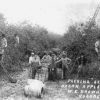 Apple Industry
Apple Industry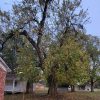 Bodark
Bodark Deforestation
Deforestation Famous and Historic Tree Program
Famous and Historic Tree Program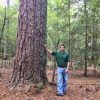 Lost 40
Lost 40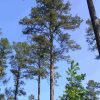 Official State Tree
Official State Tree Ouachita National Forest
Ouachita National Forest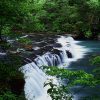 Ozark-St. Francis National Forests
Ozark-St. Francis National Forests Science and Technology
Science and Technology Timber Industry
Timber Industry Byrd Lake Natural Area
Byrd Lake Natural Area  Champion American Beech
Champion American Beech 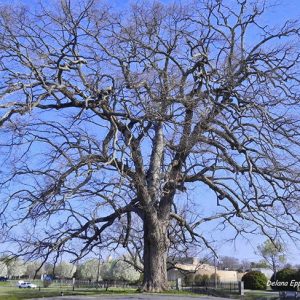 Chinquapin Oak
Chinquapin Oak  Common Persimmon Tree
Common Persimmon Tree 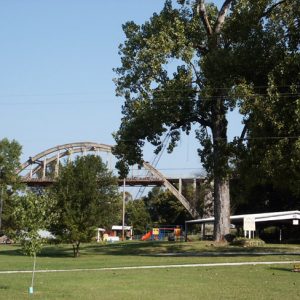 Cottonwood Tree
Cottonwood Tree 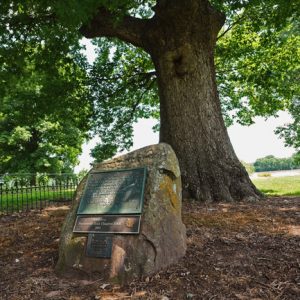 Council Oaks Tree
Council Oaks Tree 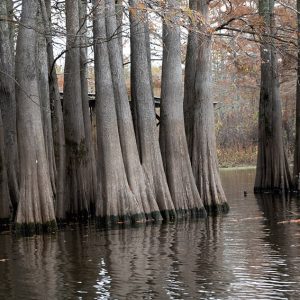 Cypress Trees
Cypress Trees  Cypress Trees
Cypress Trees  Lonoke "Lone Oak" Tree
Lonoke "Lone Oak" Tree 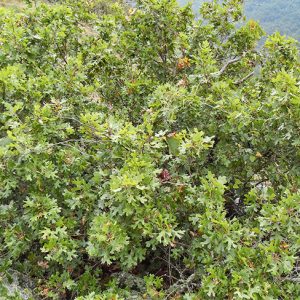 Maple Leaf Oak
Maple Leaf Oak  Wiley A. McGehee Park
Wiley A. McGehee Park 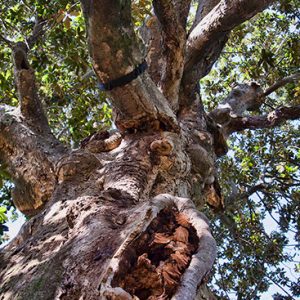 Royston Magnolia
Royston Magnolia 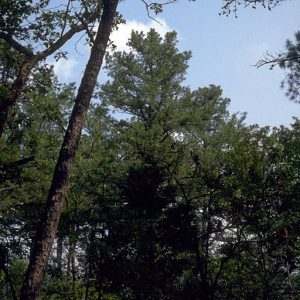 Southern Shortleaf Pine
Southern Shortleaf Pine 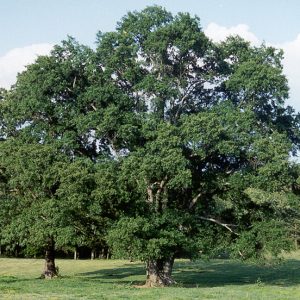 T. Texas Tyler Tree
T. Texas Tyler Tree  Telegraph Wire Tree
Telegraph Wire Tree 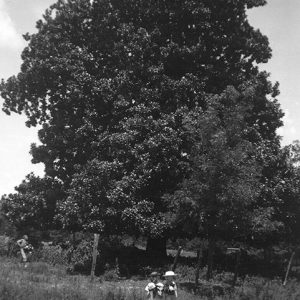 Magnolia Tree
Magnolia Tree 



Comments
No comments on this entry yet.